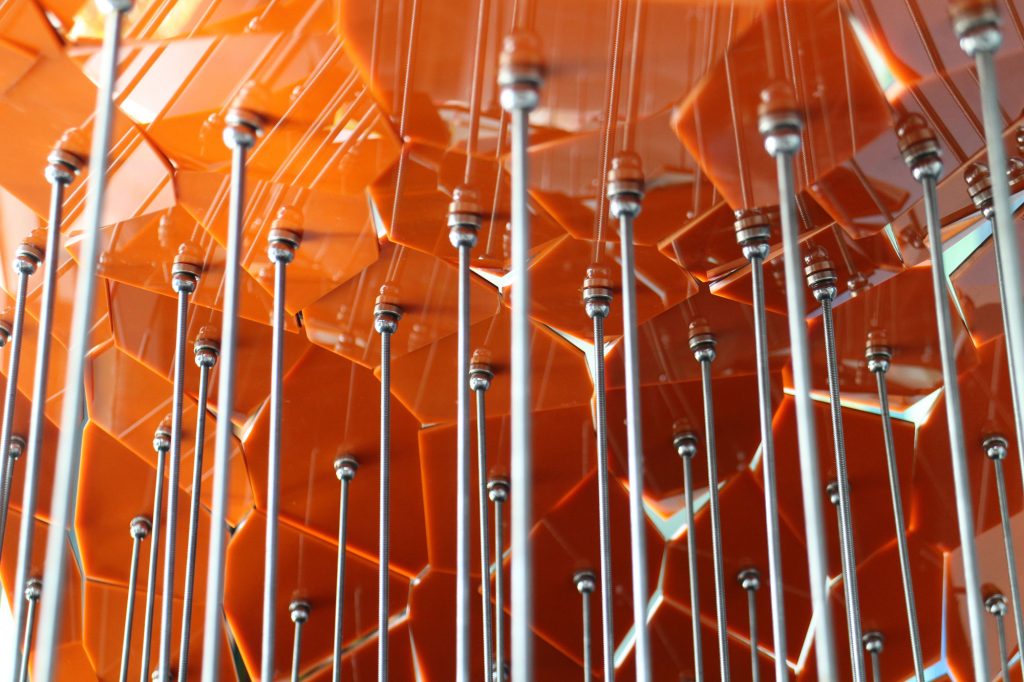
Elijah Yang has become a revolutionary figure in the world of architecture and computational design. Known for pushing the boundaries of digital fabrication and innovation, Yang has developed a reputation for creating kinetic structures and living facades that respond to environmental changes. His most remarkable achievement to date is Magnetix™, a system that redefines the potential of parametric designs in both form and function. By leveraging advanced parametric facade architecture and cutting-edge technologies such as augmented reality and 3D printing construction materials, Yang is shaping the future of sustainable design.

A Visionary Approach to Parametric Design
Elijah Yang’s journey into the realm of computational design was driven by a passion for integrating technology and architecture. His academic foundation, influenced by pioneers like Zaha Hadid and Arturo Tedeschi, shaped his design philosophy. Yang’s early projects demonstrated a mastery of parametric design and an innovative approach to kinetic buildings that could adapt and transform over time.
Magnetix™ exemplifies Yang’s vision of merging digital and physical elements. Developed using tools such as Rhino 3D and Grasshopper Rhino, this system enables architects to create living facades that adapt to changing environmental conditions. Yang’s approach emphasizes DFMA (Design for Manufacturing and Assembly), ensuring that complex parametric facade designs can be efficiently produced and installed. This integration of design and technology has positioned Magnetix™ as a leading example of architecture augmented by AR and computational tools.

The Key Features of Magnetix™
Adaptive Kinetic Structures
One of the core innovations of Magnetix™ is its focus on kinetic structures. These structures can move and shift in response to environmental stimuli such as sunlight, wind, and temperature. By incorporating parametric design principles, architects can create facades that optimize energy efficiency and comfort.
Kinetic installations built with Magnetix™ offer a blend of aesthetics and functionality. These structures can reduce the need for mechanical climate control by naturally adapting to external conditions, making them a sustainable choice for modern architecture.
Integration with Rhino 3D and Grasshopper
Magnetix™ was developed with compatibility in mind, particularly for users of Rhino 3D and Grasshopper Rhino. These software tools allow for precise control over parametric designs, enabling architects to iterate rapidly and refine complex geometries. With built-in support for AR in architecture, users can visualize their projects in real-time, enhancing collaboration and decision-making.
Grasshopper tutorials have become essential resources for designers looking to unlock the full potential of Magnetix™. Through these tutorials, architects learn to harness the power of computational design to create highly customized structures.
Sustainable and Low VOC Materials
Sustainability is a core principle of Magnetix™. Yang has prioritized the use of low VOC materials and green construction techniques to minimize the environmental impact of his designs. This focus aligns with the growing demand for eco-friendly architecture that supports long-term health and well-being.
By using 3D printing construction materials, Magnetix™ allows architects to reduce waste and optimize material usage. This technology also enables greater design flexibility, making it easier to implement complex parametric facade architecture.

Transforming the Future of Parametric Architecture
Elijah Yang’s vision extends beyond the current capabilities of Magnetix™. He is actively exploring new ways to integrate AR, IoT for smart buildings, and further advancements in parametric design software architecture. Below are some areas where Yang’s influence is shaping the future of design.
Architecture AR and Augmented Reality Applications
Yang believes that augmented reality will play a crucial role in the evolution of architectural design. By incorporating AR into the design process, architects can create immersive experiences that improve communication with clients and stakeholders. Magnetix™ is already paving the way for these innovations by offering AR compatibility.
Expanding the Potential of Kinetically-Enhanced Buildings
With continued research into kinetic building technologies, Yang aims to develop even more adaptable structures. These buildings will feature responsive elements that enhance both functionality and user experience. The integration of real-time data will enable buildings to learn and evolve over time.
Advanced Parametric Design Techniques
Yang’s commitment to parametric design architecture involves constant experimentation with new techniques. By collaborating with experts in fields such as computational design and digital fabrication, he is pushing the limits of what parametric designs can achieve. His work often draws inspiration from architects like Zaha Hadid, whose designs exemplify fluidity and innovation.
Collaboration and Global Impact
Yang’s influence is spreading globally as more architects adopt Magnetix™ and related technologies. Through partnerships with universities, research institutions, and design firms, he is fostering a new generation of architects who embrace computational and parametric design principles. These collaborations are crucial for driving widespread adoption and innovation.

The Legacy of Elijah Yang and Magnetix™
Elijah Yang’s contributions to architecture are profound and far-reaching. By championing computational design, parametric facade architecture, and sustainable practices, he has redefined what is possible in modern construction. Magnetix™ stands as a testament to his visionary approach, combining technological innovation with artistic expression.
Yang’s work demonstrates the power of integrating tools like Rhino 3D, Grasshopper Rhino, and augmented reality to create dynamic, adaptable structures. His emphasis on DFMA and low VOC materials showcases a deep commitment to sustainability and efficiency. As architects around the world continue to adopt Magnetix™, Elijah Yang’s influence will undoubtedly shape the future of design for decades to come. His legacy is not just in the buildings he has designed but in the ideas and technologies that will continue to inspire generations of architects and designers.
References
Autodesk. (n.d.). Architect Zaha Hadid: Pioneering parametric design. Retrieved from https://www.autodesk.com/design-make/articles/architect-zaha-hadid
Google Arts & Culture. (n.d.). Parametric design process. Retrieved from https://artsandculture.google.com/story/parametric-design-process-ddp
Issuu. (n.d.). Architecture as digital painting: Exploring parametric design. Retrieved from https://issuu.com/pointnemo_adato/docs/architecture_2bpainting_digital
Arturo Tedeschi. (n.d.). Official website. Retrieved from https://www.arturotedeschi.com/
Designing Buildings Wiki. (n.d.). Design for manufacture and assembly (DFMA). Retrieved from https://www.designingbuildings.co.uk/wiki/Design_for_manufacture_and_assembly
Share